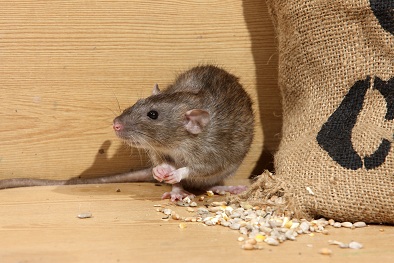EU-funded researchers keep rats at bay with a simple spray

The EU-funded PiedPiper project has developed an innovative alternative that the team is planning to bring to market soon. Rats are sprayed with a vitamin-D formulation that passes through the rat’s skin, causing a heart attack. The concept is more effective than any existing system, does not harm humans or other animals, and kills rats faster and therefore more humanely than alternative control methods.
European Research, Innovation and Science Commissioner Máire Geoghegan-Quinn said: “Health, the environment and the economy are top priorities for the EU. Through investment in innovative research, we are improving quality of life, protecting the environment and transforming great ideas into commercially attractive products that will help boost economic growth.”
The problem with traditional poison is that rats need to eat a significant portion of their body weight in poison for it to be effective. When they eat just a little, they are not only unaffected themselves, but produce offspring with natural immunity to the poison. And with each new generation, the immunity grows stronger.
“This is the right product at the right time,” said PiedPiper coordinator Steve Goode of UK-based Biotronics, one of three SMEs involved in the project
The PiedPiper approach is not only more effective than any alternatives on the market – it is also better for the environment. There is no half-eaten, toxic waste to dispose of, and as the chemicals go straight into the rat, they do not enter the environment.
PiedPiper also brings huge health advantages. The high volumes of traditional rat poison currently used mean that it is easy for toxic chemicals to enter the domestic animal and therefore human food chain.
Fewer rats also means less disease. Humans can catch over 60 diseases from rats, including salmonella, swine dysentery and toxoplasmosis. And rats destroy crops – up to 40% in some countries – reducing food stocks.
Pheromenes are used to attract rats into the PiedPiper trap. Once inside, sensors detect the rat’s exact position and sprays its back with chemicals. The rat then exits the trap within seconds.
The chemicals pass through the rat’s skin, dissolving calcium from its skeleton. The calcium enters the blood stream, causing a heart attack around 48 hours later. This is more humane than the six weeks of internal bleeding caused by standard rat poisons.
Each trap is fitted with a canister holding enough of the chemical compound to kill 250 rats. When supplies get low, the trap’s owner is alerted and the canister can be replaced. A sensor able to distinguish between rats and other animals means the spray is not activated if a water vole or shrew enters the trap.
All the technology was up and running when PiedPiper finished in November 2013. A follow-on EU-funded project should start soon. The project aims to demonstrate the system’s viability so as to attract funding for commercialisation. The team has applied for a patent and is awaiting approval.
Below Piedpier rat trap
Background
PiedPiper was a research project funded by the European Union under its Seventh Framework Programme (FP7). It brought together research institutes/universities and SMEs from the UK, Spain, France and the Netherlands.
The project received funding under the European Union's Seventh Framework Programme for Research and Technological Development (2007-2013).
